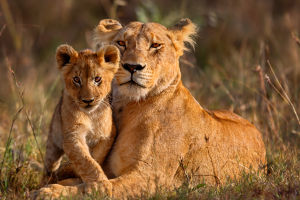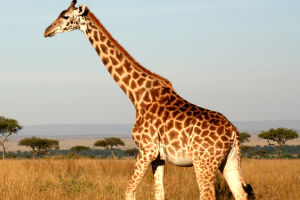On the Tibetan Plateau at an altitude of 3,000-6,000 meters above sea level lives a species of bovine animal, highland cattle.
It is an endemic cattle species on the Tibetan Plateau and is the highest mammalian wild animal living at the highest altitude in the world.
Highland cattle are large and heavy, with a body length of 2 to 2.6 meters, a tail length of 0.8 to 1 meter, a shoulder height of about 1.6 to 1.8 meters, and weight of usually 500 to 600 kilograms.
In addition to the Indian bison, it is the largest among cattle. Its habitat is generally off the beaten track, and it can adapt to various environments such as alpine peaks, alpine grasslands, and grasslands.
In summer they can even reach altitudes of 5,000 to 6,000 meters and operate at the lower edge of the snow line.
It is because of their strong adaptability to the environmental conditions of high mountains and grasslands that they can climb into many shrublands that are difficult to reach for wild hoofed and domestic animals, and hammer into legendary sacred cattle.
The food of highland cattle is mainly based on needle grass, moss, sedge, artemisia, and other alpine cold desert plants.
They feed at night and in the early morning and sleep on high mountain cliffs during the day.
The way they eat food is also quite distinctive.
In summer, they use their teeth to gnaw food, while in winter they use their tongues to lick it. This is because their teeth are hard.
They have long teeth on their tongues and can easily lick hard plants.
It is also because of the special structure of the long carnassial teeth on the tongue that they have been feeding on matted plants for a long time, making them a particularly resistant species to coarse food.
The hair of highland cattle is long and thick, especially the hair of the neck, chest, and abdomen, almost hanging to the ground, forming a dense curtain.
They have strong limbs and large, rounded hooves that are particularly hard, with soft, horny paws.
These hooves slow the speed and impulse of their bodies sliding downward, allowing them to walk freely on steep, high mountains.
The hair of highland cattle is long and thick, especially the hair of the neck, chest, and abdomen, almost hanging to the ground, forming a dense curtain.
They have strong limbs and large, rounded hooves that are particularly hard, with soft, horny paws.
These hooves slow the speed and impulse of their bodies sliding downward, allowing them to walk freely on steep, high mountains.
In addition, the respiratory system of highland cattle is also more developed, especially the short and thick trachea, which can adapt to frequent and rapid breathing.
Thus, they can adapt to the high altitude, low air pressure, and low oxygen content of the alpine grassland atmosphere.
They prefer to live in groups, sometimes hundreds of them in a common activity.
Some male yaks become isolated in their old age and often live away from the herd in summer with only three or four heads together.
However, the situation of the ancestral highland cattle of the yak is very difficult.
According to field surveys, the expansion of human activities has caused a reduction in their habitat.
So we need to protect them well and preserve the gifts that the plateau gives to human beings.


